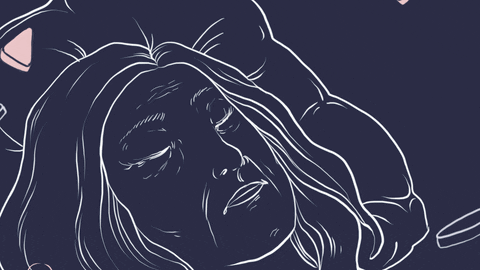

I have a little question for you. If I asked you to imagine an orange, would you be able to do it? Are you able to see that orange in your mind, or do you just see darkness? Take our quiz to check if you have aphantasia or not.
Aphantasia is a phenomenon that means people can’t visualize things (faces, objects, places, etc.) in their mind’s eye.
The majority of the population can conjure an image of their friend’s face if they’re thinking about them. They can visualize their past experiences, memories, or thoughts about the future. Someone with aphantasia isn’t able to do that.
Aphantasia is a rare condition. Only about 1% to 3% of the population is affected by it.
These images will reveal your personality!
Typical symptoms of aphantasia include difficulty recalling memories as pictures, failing to recognize faces, and struggling to visualize future events. Consider the following if you aren’t sure:
If you had issues with these instructions, you may have aphantasia.
The only sure way to identify aphantasia is by getting evaluated by a neurologist or having functional MRI brain imaging. Before you take that step, you can try any of the self-administered tests or questionnaires. Why not take a peek at the BBC health aphantasia test?
Discover your spiritual gifts.
The red star test is an easy test that doesn’t require any tools. Close your eyes, relax, and attempt to visualize a red star. Concentrate on seeing that image in your mind. How clear is it? Do you only see the outlines? Is the star blurry? Can you see the red color?
The clearer and more vivid the star is, the less likely you have aphantasia. If you can’t visualize the image at all you likely have that condition.
The ball on the table test is a visualization experiment. First, imagine a ball on the table. Next, imagine that someone walks to the table and pushes the ball. What happens to it?
Then you have to answer several questions:
These ink blots will reveal your true personality!
Aphantasia is not a type of autism, but there is a possible link there. The inability to conjure images in one’s mind, lack of imagination, and weak social skills are traits that can be found in autistic people. Still, some people who have autism don’t have any issues with visualizing or imagining things. More research is required to see whether there is a link between aphantasia and autism.
People with ADHD frequently struggle with mental imagery, possibly due to a dopamine deficiency in the brain. Dopamine is a chemical messenger that affects motivation, reward-seeking, and attention.
Aphantasia is thought to be brought on by injury to the prefrontal cortex, the area of the brain responsible for attention and executive function. This impairment may happen due to a sickness or an accident. Those who have ADHD likely have a prefrontal brain injury, which would account for their difficulties with mental imaging and visualization.
As of yet, there is no cure for aphantasia. There hasn’t been that much scientific research on this condition, and we don’t know many treatment options.
There have been cases of people recovering visualization skills with help from treatments like psychedelics. In a study from 2017, an adult who had aphantasia from birth was a subject of therapy sessions. After 18 1-hour meetings, the person reported an improvement in visualization. They were able to see more images before falling asleep but not during the day.
Some of the techniques used during therapy sessions included computer picture recognition exercises, the “memory” card game, and afterimage techniques. An optical illusion known as an afterimage occurs when an image persists for a brief period of time, even after exposure to the actual picture has stopped.
Hyperaphantasia test
Hyperaphantasia, otherwise called photorealistic imagination, is an ability to conjure very vivid images in one’s mind. That kind of mental imagery is supposed to be as clear as seeing it with your own eyes.
You can test yourself for hyperaphantasia. You can try imagining a kiss, a song, a feeling of victory, or a specific object, like an orange. Next, you answer questions like:
The more you can see in your mind, the bigger the possibility of hyperaphantasia.
Are you prepared to learn if you have aphantasia? Take our visual imagery test to find out if you have that condition. We hope you have a good time!